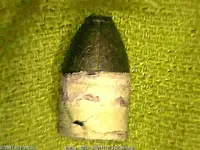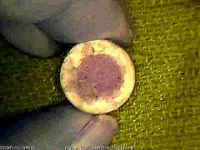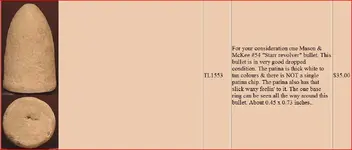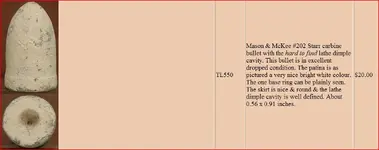DirtyMike
Hero Member
- Joined
- Feb 10, 2009
- Messages
- 898
- Reaction score
- 105
- Golden Thread
- 1
- Location
- West Virginia
- 🥇 Banner finds
- 1
- Detector(s) used
- Teknetics T2, MXT, TDI, Tejon, AT Pro
- Primary Interest:
- All Treasure Hunting
Just dug this. Its got a hole in the bottom like some sharps bullets typically have. There is also a slight ring around it and its in the shape of a tear drop sort of. Its to large to be one of those pistol tear drop bullets... 




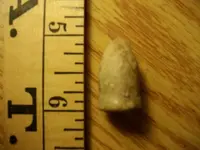
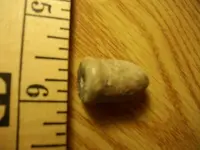
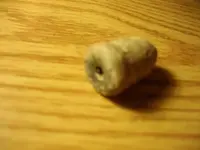
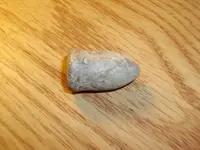

 No sir, I am saying that I agree with TiredIron that this is a possibility that poorly cast bullets could have these kinds of defects. I am not saying that the bullets you reference do not indeed have these holes for some purpose. For example, I place a lube wad into the hollow skirt (Hollow base, if you will) of my .54 Cal. Sharps bullets. This lube wad lubricates the bore on subsequent shots. My bullets are also paper patched to help avoid lead fouling in the bore. I live in a limited world of black powder firearms and bullets so I have a knowledge of the bullets that I cast and shoot. I would not be familiar with the bullets that you reference. I can only say that if the holes are consistant in size and shape and that they were cast within the bullets so that the bullet is balanced, then they were intended to be there.
No sir, I am saying that I agree with TiredIron that this is a possibility that poorly cast bullets could have these kinds of defects. I am not saying that the bullets you reference do not indeed have these holes for some purpose. For example, I place a lube wad into the hollow skirt (Hollow base, if you will) of my .54 Cal. Sharps bullets. This lube wad lubricates the bore on subsequent shots. My bullets are also paper patched to help avoid lead fouling in the bore. I live in a limited world of black powder firearms and bullets so I have a knowledge of the bullets that I cast and shoot. I would not be familiar with the bullets that you reference. I can only say that if the holes are consistant in size and shape and that they were cast within the bullets so that the bullet is balanced, then they were intended to be there. 